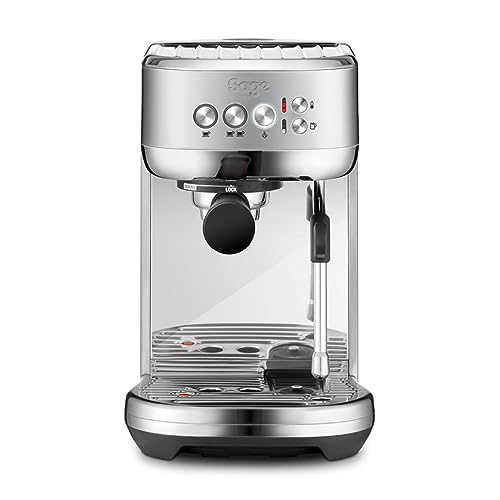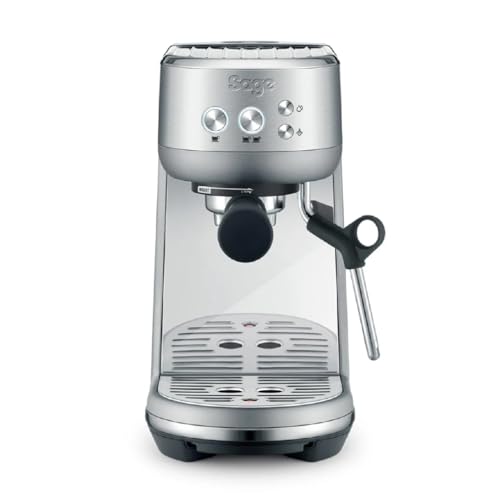A The Complete Guide To Coffee Machines Espresso From Beginning To End
페이지 정보

본문
 Coffee and Espresso Machines
Coffee and Espresso Machines Espresso machines use pressure to push water through finely ground and tamped coffee beans. They create a rich and tasty brew.
Espresso machines use pressure to push water through finely ground and tamped coffee beans. They create a rich and tasty brew.Good Housekeeping Institute experts recommend models that can be brewed with a minimum of 9 bars to ensure a perfect extraction. Beware of manufacturers who tout more pressure than is necessary.
Types
The espresso maker (also known as a coffee or Espresso maker) makes coffee that is more concentrated, of higher quality, than your favorite cafe drinks. It works with an average of nine bars of pressure. These machines have many options, such as the control of temperature and brew strength with programmable brewing as well as multiple drink sizes. They can also have steam wands that are either automatic or manual to create the appearance of latte art using texturized milk. There are three main types that are semi-automatic; super-automatic; and automatic. Each espresso machine comes with its own level and type of automation.
The most well-known mini espresso maker machine type for specialty coffee shops is semi-automatic models. Semi-automatic espresso machines permit baristas to control the brewing process however they aren't as user-friendly as fully automated or automated machines. Still, you must grind beans, fill and tamp the portafilter, and adjust the extraction time to achieve the best espresso shot of the highest quality.
Automatic machines come with a built-in mill and measure and tamp your grounds. They automatically dispense the appropriate amount of water required to extract the espresso, and they typically have a programmable drink size function. They were the most commonly used espresso machine type in our lab tests, and they provide a great balance of consistency and human control.
Functions
You'll require a reservoir to hold the water you need to make coffee, irrespective of whether you choose a steam-driven or pump-driven machine. There's a heating element that heats the water to create the pressure needed to extract the coffee from the grounds.
When the button to brew is hit to brew, the water inlet valve is closed so that only hot water under high pressure can flow through the portafilter before it is absorbed into the ground coffee. The water takes about 25 seconds to convert into espresso.
The hot-water tubing, referred to as the insulated tubing, runs from the reservoir up to the spout on the top espresso machines of your machine. The heating element for resistance heats the water as the water flows through the aluminum tube and warming plate.
After the spout has turned on, place your cup underneath the spout to ensure that espresso flows into the cup through the portafilter. The coffee maker also has the steam wand which can be used to heat up and froth the milk for espresso-based drinks like cappuccino and the latte.
Automatic machines eliminate the guesswork from brewing. They are simple to use, programable, and can measure and grind beans as well as tamp down. In our Lab tests they tend to perform best home espresso machine because they are simple to use and don't require a lot of user skills.
Materials
The inside of an espresso machine is a veritable world of copper tubes, boilers made of stainless steel and sophisticated firmware. It may appear to be complicated however, at the heart they do just one thing: push hot water through a finely-ground coffee.
When buying an espresso maker take into consideration the dimensions and space requirements as well as the drink options, energy saving options, and brewing precision. Look for a steam button to activate the steam wand, which is used for making Latte Arts and frothing milk. A gauge for pressure on the front of the machine will let you know the operating boiler and pump pressure. Find the coffee maker with two needles, so that you are able to see both the minimum and maximum pressure.
If you're looking to create more than espresso machine with frother, pick a machine that has different sizes of brew, including ristretto. There are also models that come with a removable frothing hopper that allows for hassle-free, hands-free frothing. You can also switch between different types milk easily. If you have hard water, select an espresso machine with an integrated water softener to prevent the buildup of minerals and keep your espresso tasting fresh.
Some manufacturers use a thermostat that is digital, integral and proportional to maintain the temperature of a specific range when making espresso. This makes sure you get a excellent espresso cup every time. This feature can also help reduce costs for energy because the machine only operates when it is required.
Maintenance
The care and maintenance of Espresso Machine With Grinder and coffee machines is becoming more important as they become more available for use at home. The best equipment can make an enormous difference in the quality of your coffee however only if it is properly maintained.
A regular cleaning and maintenance routine should include everything from cleaning the steam wand and group head and descaling, as well as changing the water filter every few days. If you're making between two and five coffees per day, it's recommended to clean the machine's main parts every week. However, certain parts of the machine, such as the water tank and the grinder must be cleaned every two or three weeks.
Additionally, you should backflush your machine every week. This process involves locking the portafilter into place and running the brew cycle a few times. This allows you to get rid of any coffee grounds or oils left behind. You can also clean the portafilter by using a brush and cleaner that is specifically made for espresso machines.
Maintaining your coffee and espresso capsule machine machine correctly can help it last longer. The majority of professional espresso machines used in offices and cafes cost a lot of money, and it is crucial to ensure that your machine is in good working order to last for as long as is feasible.
- 이전글You'll Never Guess This Filtered Coffee Makers's Benefits 24.11.29
- 다음글What Experts On Double Pushchair Sale Want You To Learn 24.11.29
댓글목록
등록된 댓글이 없습니다.


